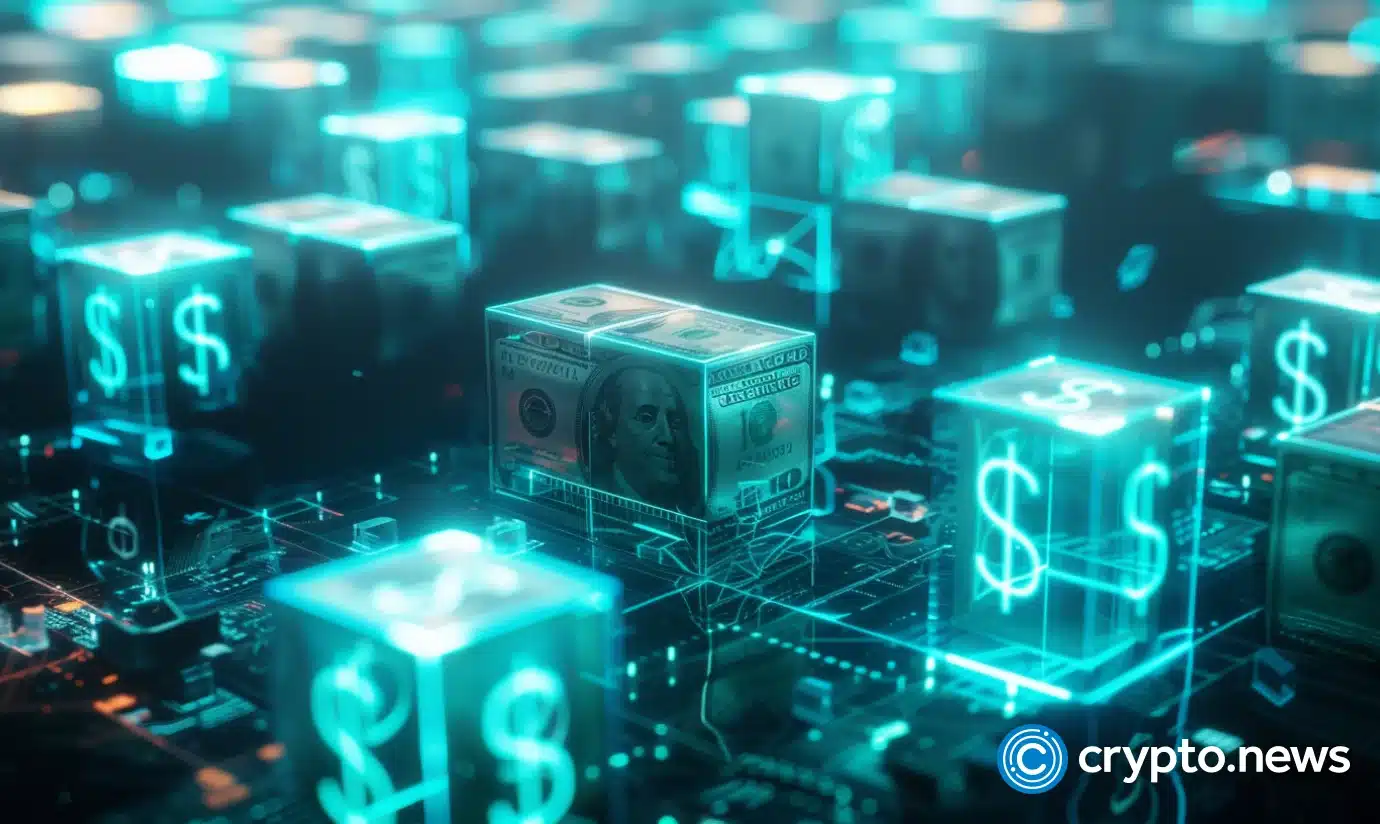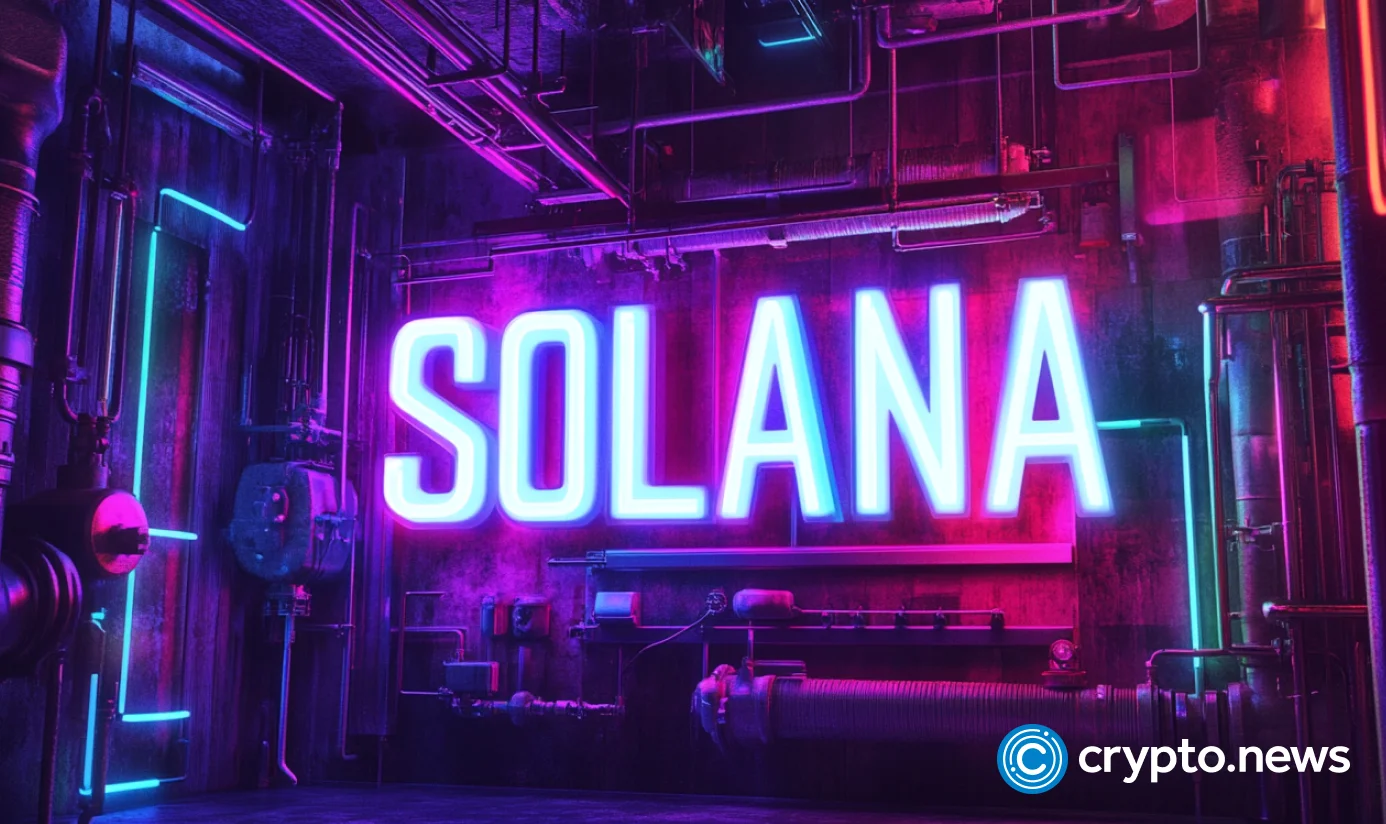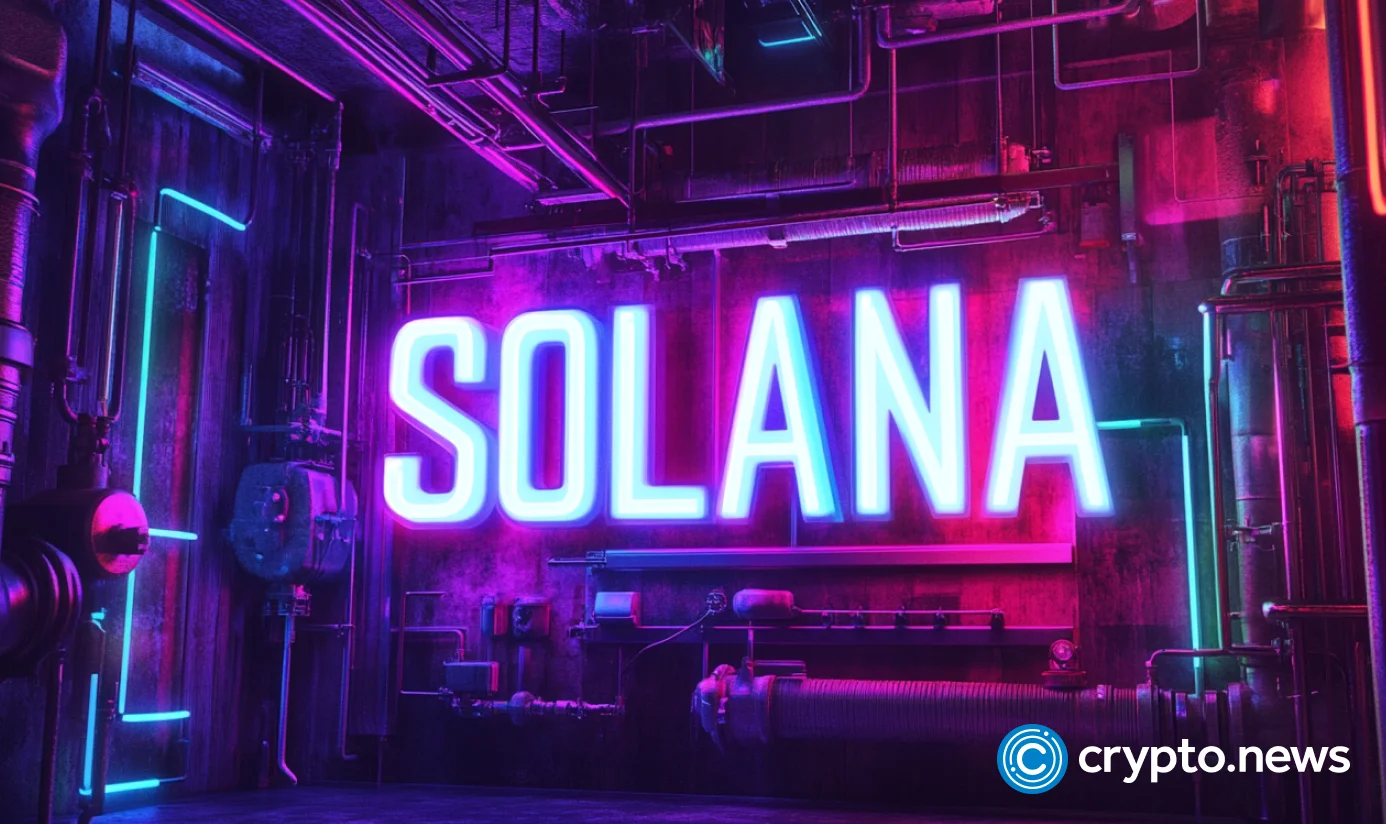layer 1
Bitcoin Bridged Trustlessly to L2; Ethereum’s Blob Mob
Published
5 months agoon
By
adminWelcome to The Protocol, CoinDesk’s weekly wrap-up of the most important stories in cryptocurrency tech development. I’m Marc Hochstein, CoinDesk’s deputy editor-in-chief for features, opinion and standards.
IN THIS ISSUE:
- Ethereum’s blob mob
- Staking on Starknet
- Avalanche’s big upgrade
- L2 teams beam over Beam Chain
- Sui suffers a brief outage
- Bitcoin bridged, trustlessly
This article is featured in the latest issue of The Protocol, our weekly newsletter exploring the tech behind crypto, one block at a time. Sign up here to get it in your inbox every Wednesday. Also please check out our weekly The Protocol podcast.
Network news
BEAMING OVER THE BEAM CHAIN: What’s good for the L1 is good for the L2s. That’s the assessment the teams behind zkSync and Polygon, two of the leading layer-2 networks running on top of Ethereum, gave of Justin Drake’s proposal to overhaul the $400 billion blockchain, dismissing suggestions it would make their auxiliary networks redundant. “That’s really a misconception,” said Alex Gluchowski, the CEO of Matter Labs, the developer firm behind zkSync. “The changes that Justin announced are focused on the consensus layer, not on the execution layer. It’s not going to affect the execution layer.” In addition to incorporating ZK, Drake’s proposal seeks to shorten block times, which could cut transaction costs for L2s settling on Ethereum. Drake also said he wants to introduce single-slot finality, meaning blocks with transaction data could be finalized immediately, and that information would become permanent right away. “All of those things are great because we depend on Ethereum as the global settlement layer,” Gluchowski said. Brendan Farmer, a co-founder at Polygon, also told CoinDesk he doesn’t think the Beam Chain would obsolesce layer-2s. Instead, he said, the upgrade would “make rollups work better.” However, others in the crypto community were underwhelmed by the whole plan, lamenting in particular that Drake’s five-year timeline wasn’t ambitious enough, leaving ample room for centrally-developed chains like Solana to eat Ethereum’s lunch.” Read more
SUI OUTAGE: Sui Network (SUI), a relatively new blockchain, experienced an unexpected two-hour outage on Thursday. The downtime was caused by a bug in its transaction scheduling logic, which led to its validator network crashing. The issue was resolved, the network said. Blockchain outages can take place for a plethora of reasons, ranging from a 51% attack to technical errors. A common error is that of nodes – or individual entities that process transactions – being unable to sync with each other, causing the blockchain to go offline. Software bugs may be another error vector, where outdated code can render the network’s processes inoperable. Read more
STAKING ON STARKNET: Starknet has become the first major rollup blockchain running on top of Ethereum to let users earn money by staking their tokens and validating transactions. (Metis was the first layer-2 to do so but is far smaller and is an “optimium,” a different kind of L2.) Now, anyone who has at least 20,000 STRK tokens (roughly $12,000 at recent prices) can pledge the asset as collateral and earn rewards for validating transactions. Users with less than 20,000 STRK can delegate their tokens to validators to stake on their behalf. (Validators that behave maliciously or neglect their duties stand to forfeit staked tokens.) Validators and delegators that want to withdraw staked tokens must wait 21 days to receive them as well as any rewards earned from staking. Implementing staking on Starknet is part of a multiphase plan. During this first phase, StarkWare, the company developing Starknet will study staking habits on the network, and from there will assess whether and how its validators can be given the additional responsibilities of creating and “attesting,” or confirming, blocks in the protocol. Read more
AVALANCHE’S BIG UPGRADE: Avalanche, the eighth-largest blockchain by total value locked (TVL), is moving ahead with a major technical makeover. The Avalanche9000 upgrade went live in a test network environment Monday, bringing the changes one step closer to the main network. Avalanche9000 will be the largest upgrade that Avalanche has seen. It is designed to cut the costs of sending transactions, operating validators and building apps on the network, whose native token (AVAX) is the 11th-largest cryptocurrency, with a $16 billion market cap. The foundation is trying to attract developers to Avalanche and encourage users to create customized blockchains using its technology, known as subnets. Somewhat confusingly, subnets are now officially referred to in the Avalanche community as “L1s,” even though they are roughly analogous to the layer-2, or L2, networks that augment Ethereum and other blockchains. (Avalanche’s “primary network,” the equivalent of a layer-1 in other ecosystems, is considered a subnet.) The team is hoping to bring Avalanche9000 to mainnet by yearend. Among other changes, 9000 would allow for a new type of validator with which anyone can launch their own subnets. Read more
ONE-WAY TICKET: BitcoinOS, a smart contract project led by crypto O.G. Edan Yago, has executed what it bills as the first trustless bridge transaction for any blockchain. Using zero-knowledge cryptography, a nominal amount of bitcoin (0.0002 BTC, about $19 and change) was locked up on the main blockchain’s testnet, and a proof was generated minting tokens on the testnet for Merlin Chain, a layer-2 network. No oracle or custodian was involved, according to BitcoinOS. For now, however, Merlin Chain is like the Hotel California or a roach motel for the bridged BTC. “This is one half of the bridge showing the ability to bridge assets from Bitcoin to an EVM,” BitcoinOS said in a press release. “Once the other half of the bridge is completed, Merlin Chain users can settle their Bitcoin-pegged assets back to the mainchain by proving that the tokens were burned.”
Ethereum’s Blob Mob
Usage of binary large objects, or blobs, has surged on the Ethereum network, signaling that more users are embracing layer-2 scaling tech for faster and more affordable transactions.
This year, Ethereum’s Dencun upgrade introduced blobs, which allow large chunks of data to be temporarily attached to transactions, and later deleted after the data is verified. (You can think of a blob as a sidecar that rides along with a motorcycle for a time but eventually gets detached and discarded.) Layer-2 protocols such as BASE, Arbitrum, and Optimism use blobs to bundle transactions together, process them off-chain and then post them to the Ethereum main chain for verification without permanently gumming up the works.
The number of blobs posted to the network consistently averaged more than 21,000 this month, matching the record activity seen in March, according to pseudonymous data analyst Hildobby’s Dune Analytics dashboard.
Posting blobs costs a fee, which fluctuates depending on network conditions. The fees are paid in Ethereum’s native token ether, and are burned just like regular transaction fees, taking supply of ETH off the market, a positive for the coin’s price.
In this way, blobs mitigate the much-discussed cannibalization of the main chain by L2.
The blob base submission fee spiked as high as $80 on Monday, the highest since March, and the average number of blobs posted in each Ethereum block rose to 4.3. More importantly, blob fees have burned over 214 ETH worth $723,000 over the last seven days, the sixth largest source of fee burns on the network over that period, according to data from ultrasound.money.
CLICK HERE FOR THE FULL ANALYSIS BY COINDESK’S OMKAR GODBOLE
Money Center
Vibe shift
Not just fun and games?
Bringing in the big Sun
“Reports are greatly exaggerated”
Calendar
- Dec. 4-5: India Blockchain Week, Bangalore
- Dec. 5-6: Emergence, Prague
- Dec. 9-12: Abu Dhabi Finance Week
- Dec. 11-12: AI Summit NYC
- Dec. 11-14: Taipei Blockchain Week
- Jan 9-12, 2025: CES, Las Vegas
- Jan. 15-19: World Economic Forum, Davos, Switzerland
- January 21-25: WAGMI conference, Miami.
- Jan. 24-25: Adopting Bitcoin, Cape Town, South Africa.
- Jan. 30-31: PLAN B Forum, San Salvador, El Salvador.
- Feb. 1-6: Satoshi Roundtable, Dubai
- Feb. 19-20, 2025: ConsensusHK, Hong Kong.
- Feb. 23-24: NFT Paris
- Feb 23-March 2: ETHDenver
- May 14-16: Consensus, Toronto.
- May 27-29: Bitcoin 2025, Las Vegas.
Source link
You may like
Cardano
Cardano price could surge to $2 as whale purchases rise
Published
3 weeks agoon
March 25, 2025By
admin
Cardano price has remained in a tight range over the past few weeks as market participants await the next catalyst.
Cardano (ADA) was trading at $0.760, down by 43% from its highest level in December last year. It has underperformed other popular coins like Mantra (OM) and Cronos (CRO) this month.
Cardano has three main catalysts that could propel it to $2 in the coming months. First, there are signs that whales are accumulating the coin in anticipation of more gains ahead. Data shows that whales have acquired over 240 million ADA coins in the past week, valued at over $182 million. The whale purchasing trend appears to be gaining momentum.
Second, Cardano could benefit from the likely approval of a spot ADA exchange-traded fund by the Securities and Exchange Commission. Grayscale Tuttle Capital Management have already submitted applications.
An ADA fund would be a positive development for the coin, as it could lead to more inflows from institutional investors.
Third, data shows that more investors are staking their Cardano coins, signaling that they intend to hold them long-term. The staking market cap has jumped by 8.1% to $16.1 billion, while the yield stands at 2.60%.
Cardano price technical analysis

The other catalyst for ADA price is that it is in the second phase of the Elliott Wave pattern. This phase is characterized by a brief pullback, followed by the third bullish wave — typically the longest.
Cardano has likely completed the second phase and is poised to enter the third wave, which could push it to the psychological level of $2. This target aligns with the 38.2% retracement level and represents a 160% increase from the current price.
Cardano remains above the 50-week Exponential Moving Average and is forming a bullish flag pattern, a bullish continuation signal comprising a vertical line and a flag-like consolidation.
However, this prediction is based on the weekly chart, meaning the pattern could take time to fully develop. The flag section of the bullish flag has already taken more than three months to form.
Source link
DeFi
Berachain rolls out next phase of proof-of-liquidity system
Published
3 weeks agoon
March 24, 2025By
admin

Berachain is rolling out the next phase of its proof-of-liquidity system, expanding governance and emissions beyond its native BEX pools.
Up until now, only Berachain’s (BERA) native exchange, BEX, was used to distribute rewards. Other decentralized applications will be able to apply for incentives through new reward vaults starting on Mar. 24, according to Berachain’s official announcement. This will help them expand by drawing liquidity.
https://twitter.com/berachain/status/1902854165883167167?s=46&t=nznXkss3debX8JIhNzHmzw
Liquidity pools from multiple decentralized finance platforms have been included in the initial set of vaults, with more to be added later. This has opened up a more transparent system where users have more control over how incentives are allocated and projects vie for rewards.
With Berachain’s PoL model, assets remain active in DeFi, in contrast to traditional proof-of-stake blockchains, where users lock up tokens for security. Network activity is limited in PoS systems because staked tokens are frequently not available for lending or trading.
The system used by Berachain ensures that validators send back some rewards to the network rather than keeping them. Applications that boost activity on the blockchain and aid in its growth receive these rewards. The governance token, BGT, gives holders the ability to vote on which validators and projects receive support, thereby determining how these rewards are distributed.
The first approved vaults focus on DEX liquidity pools, which allow users to swap tokens easily. These pools were selected based on their liquidity, security, and importance to the network. Liquidity pairs on BEX, Kodiak, Beradrome, and other protocols featuring key assets like BERA, HONEY, and BGT, as well as major stablecoins, are among the first approved vaults.
Berachain has grown rapidly since launching its mainnet on Feb. 6. The platform now has $3.1 billion in total value locked and almost $1 billion in circulating stablecoins. The trading volume in February alone was $1.9 billion, according to DefiLlama data.
Following launch, BERA hit an all-time high of $18.82 before falling to its present range of $6.03–$6.93. The network has a fully diluted volume of $3.37 and a $728 million market capitalization as of Mar. 24. The new governance initiative is expected to attract more users and contribute to further growth of the blockchain.
Source link
Blockchain
Solana Hits 400B Transactions, Nearly $1T in 5 Years
Published
1 month agoon
March 17, 2025By
admin

Solana, the layer-one blockchain platform, celebrated five years since the launch of its mainnet on March 16, 2020.
To celebrate the milestone, the network shared its accomplishments, which include more than 1,300 validators, nearly $1 trillion in trading volume, and over 408 billion total Solana transactions, in a post on its official X account.
https://twitter.com/solana/status/1901279678620749997?s=46&t=nznXkss3debX8JIhNzHmzw
Solana (SOL) was founded in 2017 by Anatoly Yakovenko with the goal of addressing the primary challenge facing blockchain technology. The network aims to strike the right balance between scalability, security, and decentralization.
When combined with proof-of-stake, Yakovenko’s proof-of-history system speeds up transaction processing. Solana has been able to grow while maintaining low costs as a result.
More than 254 million blocks have been generated by Solana since its mainnet went live in March 2020. Since then, the network has grown to be a major force in decentralized finance, with over $7 billion in total value locked in its protocols, according to DeFiLlama data.
Meanwhile, Solana’s stablecoin market has reached $11 billion, down from its peak of over $12.6 billion in February 2025. Similarly, its market cap, which once peaked at $127.5 billion, now stands at $65 billion.
Developer interest in Solana has also significantly increased. It surpassed Ethereum as the most popular blockchain for new developers in 2024. According to Electric Capital’s 2024 developer report, Solana attracted 7,625 new developers in the previous year, accounting for 19.5% of all new entrants in the market.
On Mar. 17, CME Group plans to introduce Solana futures contracts, subject to regulatory clearance. These futures, which are intended to assist investors in protecting themselves from price swings, indicate that Solana is becoming a more widely accepted asset in the cryptocurrency market.
Furthermore, Solana has been included in several exchange-traded funds applications, indicating its increasing mainstream acceptance and room for growth.
Source link

Top Expert’s Update Sets $10 Target

How Academia Interacts With The Bitcoin Ecosystem

AB DAO and Bitget Launch Dual Reward Campaign, Distributing $2.6M Worth of $AB Globally

AI crypto tokens at risk as Nvidia faces restrictions on China exports

Coinbase Urges Australia to Vote for Crypto Progress in May

How High Would Pi Network Price Go If Pi Coin Adopts Transparency to Avoid Mantra Pitfalls

XRP’s ‘Rising Wedge’ Breakdown Puts Focus on $1.6 Price Support

China selling seized crypto to top up coffers as economy slows: Report

Ethereum Price Dips Again—Time to Panic or Opportunity to Buy?

The Inverse Of Clown World”

Bitcoin Indicator Flashing Bullish for First Time in 18 Weeks, Says Analyst Who Called May 2021 Crypto Collapse

3iQ and Figment to launch North America’s first Solana staking ETF

Bitcoin Miners Are Selling More BTC to Make Ends Meet: CryptoQuant

5 Biggest Ripple (XRP) Price Predictions for April 2025

Tokenization Firm Securitize Acquires MG Stover’s Digital Asset Fund Administration Unit

Arthur Hayes, Murad’s Prediction For Meme Coins, AI & DeFi Coins For 2025

Expert Sees Bitcoin Dipping To $50K While Bullish Signs Persist

Aptos Leverages Chainlink To Enhance Scalability and Data Access

Bitcoin Could Rally to $80,000 on the Eve of US Elections

Crypto’s Big Trump Gamble Is Risky

Sonic Now ‘Golden Standard’ of Layer-2s After Scaling Transactions to 16,000+ per Second, Says Andre Cronje

Institutional Investors Go All In on Crypto as 57% Plan to Boost Allocations as Bull Run Heats Up, Sygnum Survey Reveals

Ripple-SEC Case Ends, But These 3 Rivals Could Jump 500x

3 Voting Polls Show Why Ripple’s XRP Price Could Hit $10 Soon

Has The Bitcoin Price Already Peaked?

A16z-backed Espresso announces mainnet launch of core product

The Future of Bitcoin: Scaling, Institutional Adoption, and Strategic Reserves with Rich Rines

Xmas Altcoin Rally Insights by BNM Agent I

Blockchain groups challenge new broker reporting rule

I’m Grateful for Trump’s Embrace of Bitcoin
Trending

 24/7 Cryptocurrency News5 months ago
24/7 Cryptocurrency News5 months agoArthur Hayes, Murad’s Prediction For Meme Coins, AI & DeFi Coins For 2025

 Bitcoin3 months ago
Bitcoin3 months agoExpert Sees Bitcoin Dipping To $50K While Bullish Signs Persist

 24/7 Cryptocurrency News3 months ago
24/7 Cryptocurrency News3 months agoAptos Leverages Chainlink To Enhance Scalability and Data Access

 Bitcoin5 months ago
Bitcoin5 months agoBitcoin Could Rally to $80,000 on the Eve of US Elections

 Opinion5 months ago
Opinion5 months agoCrypto’s Big Trump Gamble Is Risky

 Altcoins3 months ago
Altcoins3 months agoSonic Now ‘Golden Standard’ of Layer-2s After Scaling Transactions to 16,000+ per Second, Says Andre Cronje

 Bitcoin5 months ago
Bitcoin5 months agoInstitutional Investors Go All In on Crypto as 57% Plan to Boost Allocations as Bull Run Heats Up, Sygnum Survey Reveals

 Price analysis5 months ago
Price analysis5 months agoRipple-SEC Case Ends, But These 3 Rivals Could Jump 500x


